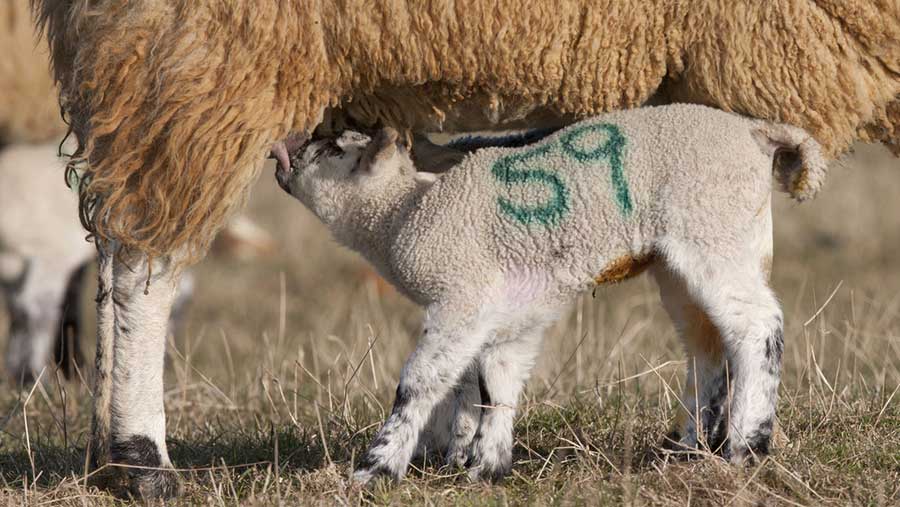How to meet increased ewe appetite during lactation
 © Tim Scrivener
© Tim Scrivener Delayed grass growth means it is increasingly important that sheep farmers are meeting the energy requirements of lactating ewes to ensure adequate milk yield for newborn lambs.
Independent sheep adviser Kate Phillips warns the delayed grass growth UK-wide could be impacting heavily on lambs where ewes haven’t been supplemented.
“Milk for lambs is likely to be more challenging this year, so farmers shouldn’t cut costs in the wrong places.
“It is still best to rear as many lambs as possible and we all need to be optimising lamb growth rates and keeping grass quality high,” she says.
See also: Fine-tuning ewe diets lifts lamb liveweights
Failing to meet the ewe’s increased appetite during lactation can lead to higher lamb losses, poor growth rates in lambs, and an increase in susceptibility to disease in both, says AHDB Beef & Lamb.
Peak milk yield occurs three to four weeks after lambing, before production naturally begins to drop off.
Maximising milk production to achieve the highest possible peak will result in an overall higher milk yield from a ewe, meaning better weight gain in lambs, it says.
“After a reduction in her appetite during late pregnancy due to the growing lambs putting pressure on the rumen, a ewe’s appetite increases by about 50% one she has lambed, which helps her to meet the increasing energy and protein requirements,” say Nerys Wright, AHDB Beef & Lamb regional manager for the South East and East.
Underfeeding during lactation and the later stages of pregnancy also increases mastitis incidence in a flock, with Warwick University research suggesting lowland ewes with a BCS of less than three are at higher risk of infection.
An adequate intake of energy is also vital to hit the highest possible peak in milk yield.
To achieve this, AHDB Beef & Lamb suggest farmers look at ewes’ access to forage both indoor and in the field:
Indoors
- If a ewe remains housed for more than 24 hours after lambing, offering ad-lib access to forage and water is crucial
- Do not overfeed concentrate – no more than 0.5kg per ewe each feed – as it will displace the amount of forage consumed
- If feeding more the 0.5kg of concentrate, split it into two feeds to keep rumen pH levels stable and optimise forage digestion
- Weigh lambs regularly – every two to four weeks
- Eight-week-old lamb weights are a good indication of maternal milk yield and parasite burden. The aim is for lambs that weigh 4.5kg at birth to be hitting the scales around the low 20s (kilos). However, this is breed dependent.
Outdoors
- Out on grass, ewes with access to sward at a height of less than 3cm will require extra forage – with 0.5kg of high-quality forage (12+ ME) recommended per lamb reared if grazing grass is 3-4cm
- If grazing grass above 4cm, supplementary feeding may not be necessary
- However, if the ground is very wet, spring grass may pass through the ewe quickly, leading to weight loss and a risk of staggers
- Providing drier feed in the form of forage slows the rate of passage through the rumen
- Weigh lambs regularly – every two to four weeks
- Eight-week-old lamb weights are a good indication of maternal milk yield and parasite burden. The aim is for lambs that weigh 4.5kg at birth to be hitting the scales around the low 20s (kilos). However, this is breed dependent.
